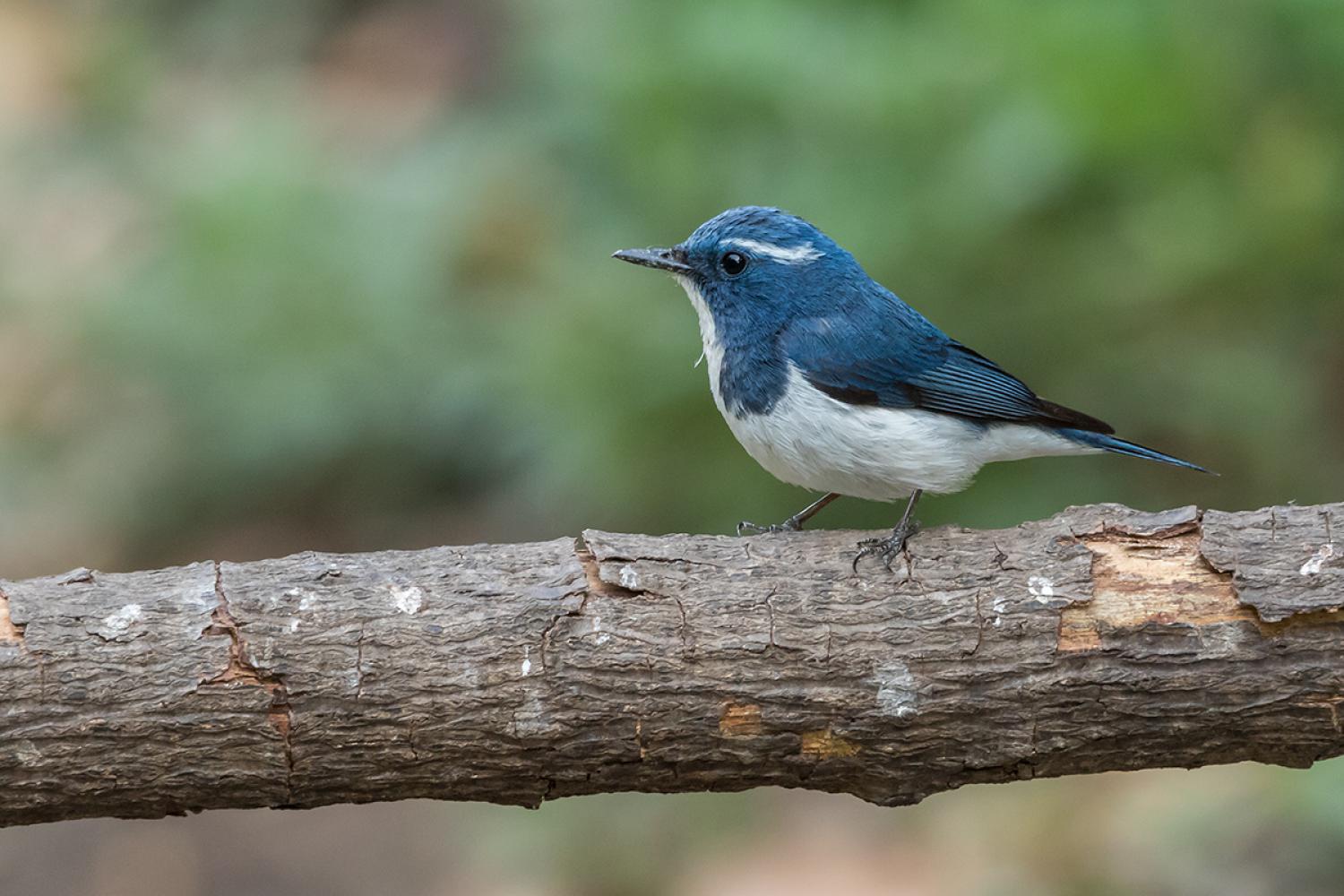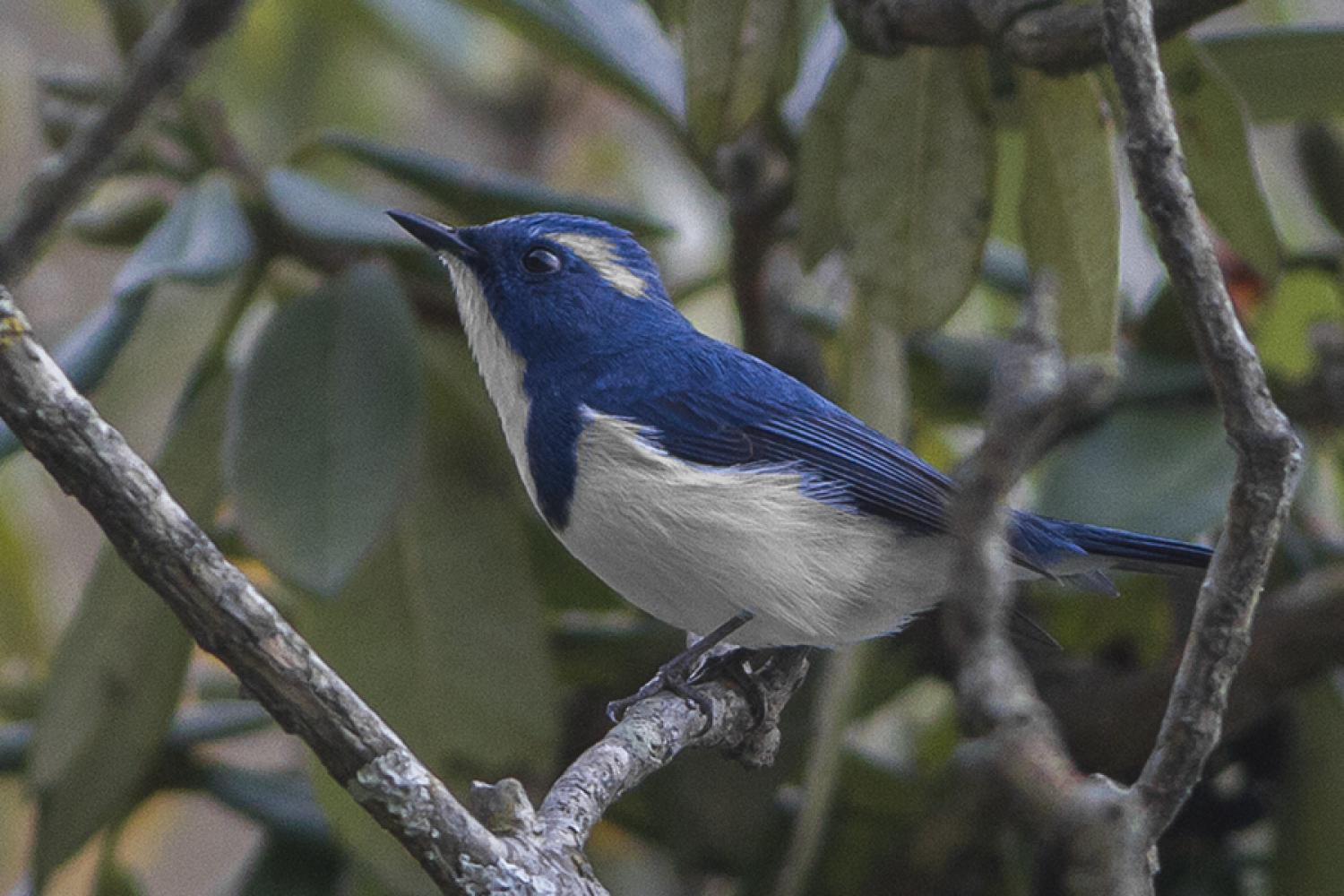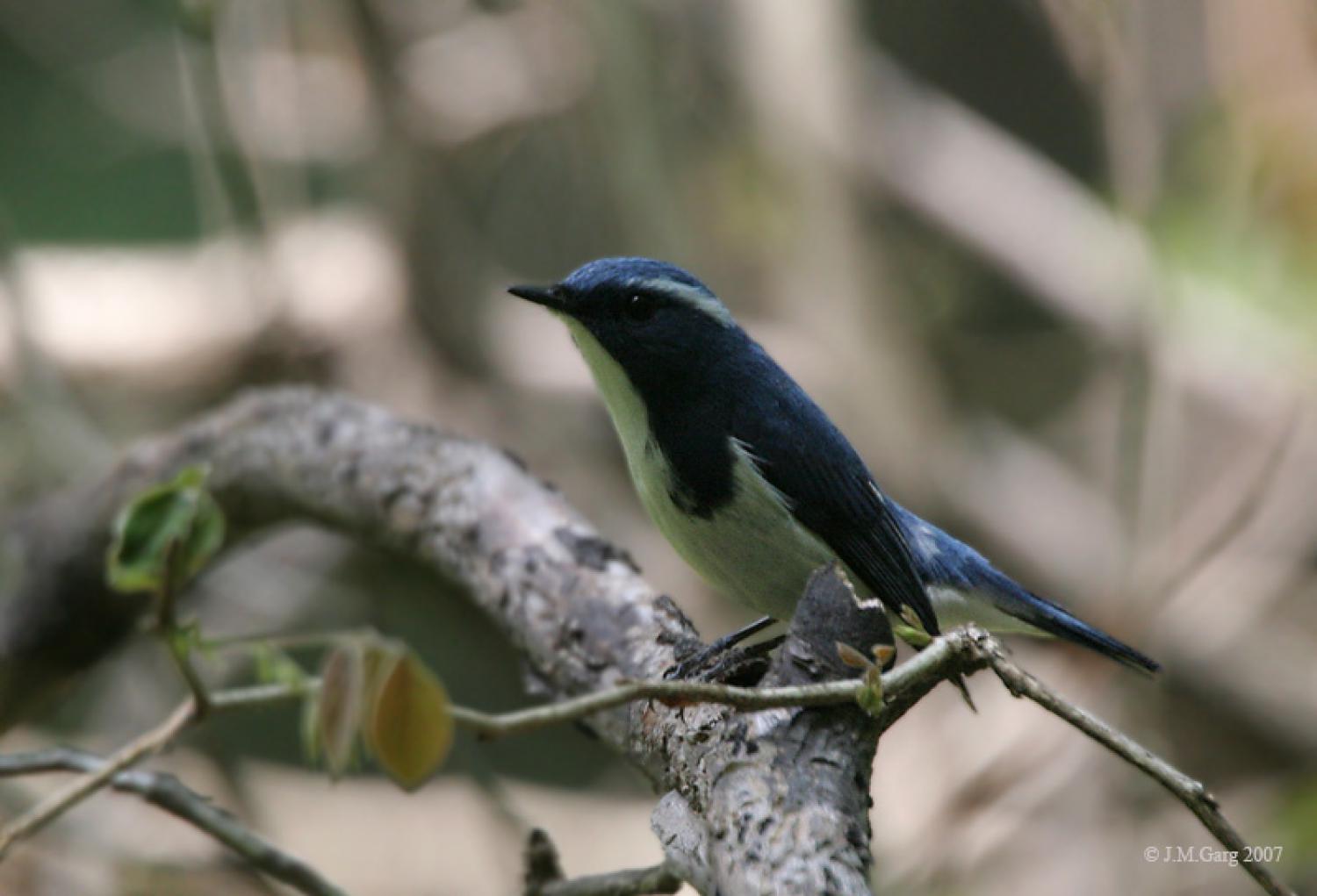Species of Thailand
Ultramarine flycatcher
Ficedula superciliaris
Thomas Caverhill Jerdon, 1840
In Thai: นกจับแมลงสีคราม
The ultramarine flycatcher or the white-browed blue flycatcher (Ficedula superciliaris) is a small arboreal Old World flycatcher in the ficedula family that breeds in the foothills of the Himalayas and winters in southern India.
Description
Somewhat smaller than a sparrow (ca. 10 cm) and with a stocky build. The male is deep blue above, sides of head and neck are deep blue, and a prominent white patch runs from centre of throat, through breast to belly.
The amount of white on the brow and tail show clinal variation from West to East along the Himalayan foothills, which is sometimes taken to distinguish three races:
- The western race from the western Himalayas has a distinctive white supercilium and white bases to the outer tail feathers.
- The eastern race (Ficedula superciliaris aestigma) from the eastern Himalayas lacks distinct white patches.
- The population from the south Assam hills (sometimes designated a third race cleta) completely lack any supercilium.
Usually singly, though sometimes in mixed hunting parties in the winter. Keeps largely to the low trees and bushes, feeding among the foliage canopy, not venturing much into the open. Constantly jerks up its tail, often accompanied by fluffing of head feathers and trrr note, especially in proximity of nest. Diet is mainly insects.
Distribution
Summer: Common breeding visitor to the western Himalayas, from Jammu and Kashmir and Himachal Pradesh to Uttarakhand (western race), and intergrading within Nepal with the eastern race Ficedula superciliaris aestigma which continues in the eastern Himalayas through Bhutan to Arunachal Pradesh. Breeding between 2000–2700 m, occasionally as low as 1800 and as high as 3200 m.
Also in the lower hills of Meghalaya and Nagaland, Khasi and Cachar hills, sometimes considered a third race; winter movements of this population is not known.
Habitat: Open, mixed forests of oak, rhododendron, pine, fir, etc., occasionally orchards.
Winter: Central India from Delhi south to northern Maharashtra, Goa, northern Maharashtra, and eastward to Andhra Pradesh and Odisha. Wintering populations in the eastern states, possibly from Nepal/Sikkim, are mixed: a good part of this population also have white supercilium and basal tail patches (see description below). Also sometimes found as a vagrant in the northern part of Bangladesh.
Nesting
- Season: middle of April to early July
- Nest: soft structure of fine moss with some strips of bark and fine grass, lined with hair and rootlets, place in holes or clefts in trees, at heights up to seven meters, or in a depression on a steep bank. Readily takes to nest boxes in hill station gardens.
- Eggs: 3 to 5, usually 4, olive greenish to dull stone-buff, densely freckled all over with reddish brown, or in another type, mostly around the large end, forming a cap. Average size 16x12.2 mm.
Foraging Behavior
Typically they respond to indirect cues more than direct cues in relation to risk management when foraging for food.
This article uses material from Wikipedia released under the Creative Commons Attribution-Share-Alike Licence 3.0. Eventual photos shown in this page may or may not be from Wikipedia, please see the license details for photos in photo by-lines.
Category / Seasonal Status
Wiki listed status (concerning Thai population): Winter visitor
BCST Category: Recorded in an apparently wild state within the last 50 years
BCST Seasonal status: Non-breeding visitor
Scientific classification
- Kingdom
- Animalia
- Phylum
- Chordata
- Class
- Aves
- Order
- Passeriformes
- Family
- Muscicapidae
- Genus
- Ficedula
- Species
- Ficedula superciliaris
Common names
- Thai: นกจับแมลงสีคราม
Conservation status

Least Concern (IUCN3.1)
Photos
Please help us review the bird photos if wrong ones are used. We can be reached via our contact us page.
Range Map

- Chiang Dao Wildlife Sanctuary
- Doi Inthanon National Park
- Doi Lang
- Doi Lo District, Chiang Mai
- Doi Pha Hom Pok National Park
- Kaeng Krachan National Park
- Khao Yai National Park
- Mae Ping National Park




